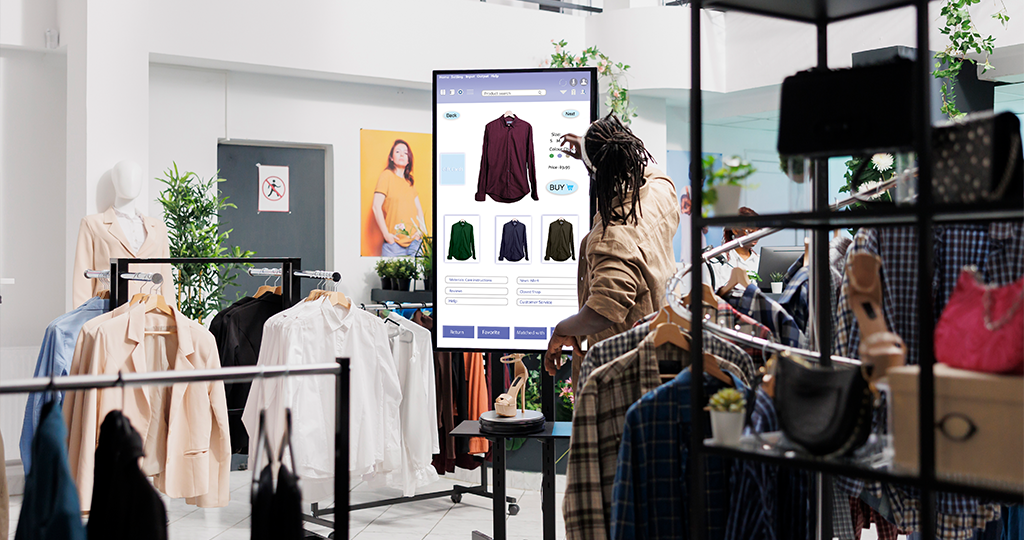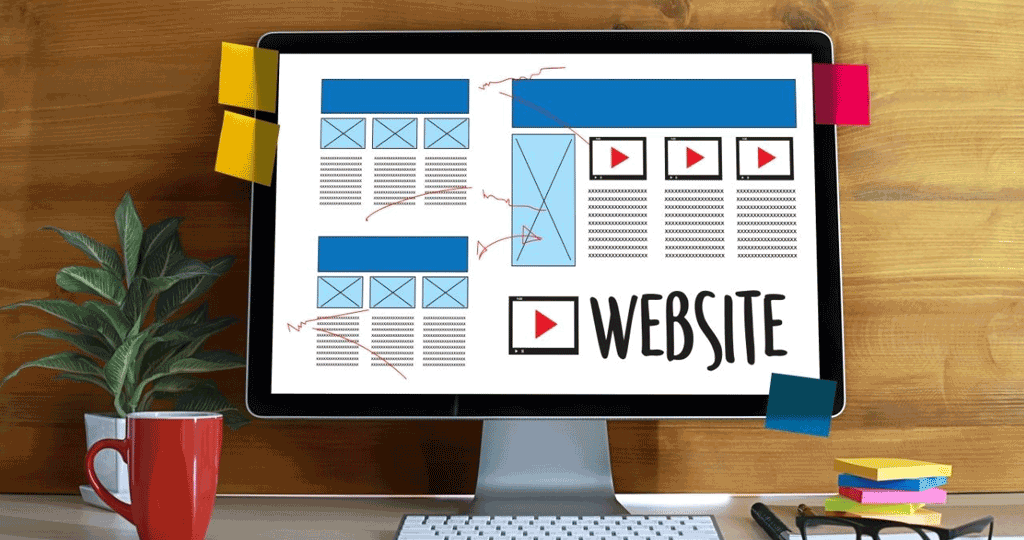In "E-commerce UX Design: From Fundamentals to Future Trends," Way2Smile Solutions, a leading web development company in Dubai, discusses key UX design practices and the upcoming trends that are set to revolutionize the e-commerce landscape.
Shopping online is more popular than ever. But with so many choices available, how do you make sure your online store stands out? The answer: exceptional user experience (UX) design. This article gets you deep into the world of e-commerce UX, exploring everything from the fundamentals of user-friendly navigation to the exciting trends shaping the future of online shopping. Whether you're a seasoned e-commerce pro or just starting out, we will equip you with the knowledge and strategies you need to create an online store that delights your customers and keeps them coming back for more.
What exactly is E-commerce UX?
E-commerce UX, or User Experience, is all about how we feel and what we experience when we shop online. It's like the vibe of a store, but in the digital world. Every little thing matters - from the moment we land on a website to the moment we finish buying something and even afterwards.
Good e-commerce UX means making it super easy and enjoyable for us to find what we want and to buy it without any hassle. It's like having a smooth ride without any bumps along the way. This involves making the website look good, making it easy to find stuff, making the checkout process a breeze, and being there to help us out if we have any problems.
The whole point of focusing on e-commerce UX is to make us happy and satisfied customers. When we're happy with our shopping experience, we're more likely to come back again and again. And when we keep coming back, that's good news for the online store too. So, it's a win-win situation!
How can businesses ensure a great UX?
In the bustling digital marketplace of today, captivating customers hinges on one crucial factor: delivering a seamless and delightful user experience (UX). Whether you're steering a quaint boutique or a prominent retail powerhouse, ensuring that your online store boasts user-friendly features is indispensable. But how can businesses achieve this feat? Let's delve into some practical strategies that can elevate your online shop, employing ecommerce user experience best practices to cultivate customer loyalty and drive repeat business.
Make Navigation Effortless: Imagine walking into a store and not being able to find what you're looking for—it's frustrating, right? The same goes for online shopping. Make sure your website's navigation is intuitive and organized. Clear categories, easy-to-use menus, and a reliable search function can help customers find what they need without any hassle.
Optimize for Mobile: We're living in the age of smartphones, and more people are shopping on their mobile devices than ever before. That's why it's crucial to ensure that your ecommerce site is optimized for mobile users. From responsive design to seamless checkout processes, your website should offer a seamless experience across all devices.
Speed Matters: In a world where every second counts, slow-loading websites can be a major turnoff for customers. Optimizing your site's speed is essential for keeping users engaged and preventing them from bouncing away. Keep things running smoothly by minimizing image sizes, caching content, and investing in reliable hosting.
Keep Checkout Simple: Ever abandoned a purchase because the checkout process was too complicated? You're not alone. Simplify the checkout process as much as possible by minimizing form fields, offering guest checkout options, and providing multiple payment methods. Keep customers informed of their progress to reduce frustration and increase conversions.
Personalize the Experience: Online shopping isn't a one-size-fits-all experience. Use data analytics to personalize the shopping experience for each customer. From product recommendations to tailored promotions, personalized content can help customers feel valued and understood.
Show, Don't Tell: When you're shopping online, what catches your eye the most? It's the visuals, right? Good pictures and videos can make or break your decision to buy something. So, if you're selling online, make sure you invest in top-notch images and videos. Show off your products in the best way possible to attract those customers! User-generated content, such as reviews and photos, can also add credibility to your offerings.
Offer Stellar Support: Even with the best UX, customers may still encounter issues or have questions. That's where excellent customer support comes in. Make it easy for customers to reach out for assistance, whether it's through live chat, email, or social media. A prompt and helpful response can turn a potential problem into a positive experience.
Learn more: Top Web Development Strategies for E-Commerce Success
Key UX Design Elements for E-commerce
In the busy online shopping world, user experience (UX) is super important. It's like the heartbeat of a successful online store. It decides if people stay on your site or leave quickly. But what makes a great online shopping experience? Let's explore the main things that make online shopping easy and fun.
Navigation Menus & Buttons: Think of navigation menus and buttons as the roadmap guiding your visitors to their destination. Whether it's finding a specific product category or completing a purchase, clear navigation makes the journey easy and enjoyable, increasing the chances of conversion.
Search Functionalities: Ever found yourself on a website, desperately trying to locate a particular item? That's where effective search functionalities come in. A robust search feature helps users quickly find what they're looking for, making their shopping experience efficient and satisfying.
CTA Buttons: CTA buttons are like friendly nudges that encourage visitors to take action, whether it's adding an item to their cart or signing up for updates. Well-designed CTAs guide users towards making a purchase, boosting conversion rates and driving sales.
Product Listings: Detailed product listings are like virtual shelves stocked with all the information shoppers need. From product descriptions to images, comprehensive listings help users make informed decisions, building trust and confidence in your brand.
Product Details: Have you ever hesitated to buy something online because you weren't sure about its specifications? Detailed product details address that uncertainty, providing shoppers with all the information they need to make a confident purchase.
Loading Speed: Slow-loading websites are a major turn-off for users. Optimizing your site's loading speed ensures a smooth and frustration-free browsing experience, keeping shoppers engaged and less likely to abandon their carts.
Responsive Design: With more people shopping on their smartphones and tablets, responsive design is a must. A website that looks and functions well across all devices ensures that users can shop comfortably wherever they are, increasing the chances of conversion.
Shopping Cart: The shopping cart is the gateway to checkout. An intuitive and user-friendly cart experience makes it easy for shoppers to review and finalize their purchases, reducing cart abandonment rates and boosting sales.
Checkout Process: A lengthy or complicated checkout process can be a major hurdle for shoppers. Streamlining the checkout process, with as few steps as possible, makes it easy for users to complete their purchase and increases the likelihood of conversion.
Personalization: Adding a personal touch enhances the shopping experience, making it feel uniquely tailored to each individual. By tailoring recommendations and offers to individual preferences, you create a more personalized and engaging experience for each shopper, fostering loyalty and repeat business.
The Crucial Role of User Experience (UX) Design in E-commerce
In the world of e-commerce, it's not just about what you sell; it's about how you sell it. User Experience (UX) Design is the secret sauce that makes the difference between a thriving online store and one that struggles to gain traction. Let's dive deep into why UX design is so important for e-commerce development and how it shapes the digital shopping experience.
Understanding User Experience (UX) Design: Designing user experiences involves more than just creating visually appealing aesthetics. It's about understanding how users interact with your website or app and making that experience as smooth and intuitive as possible. Think of it as the behind-the-scenes magic that makes shopping online a breeze.
Navigating the Digital Shopper's Journey: Ever felt frustrated trying to find what you're looking for on a website? That's where UX design comes in. It's all about guiding customers seamlessly from the moment they land on your site to the checkout page. By making everything easy to find and simple to use, you can keep shoppers happy and coming back for more.
Optimizing Conversion Rates: At the end of the day, it's all about turning visitors into customers. UX design plays a crucial role here by making the buying process as frictionless as possible. Whether it's a clear call-to-action button or a streamlined checkout process, every little detail can make a big difference in whether someone completes their purchase or abandons their cart.
Fostering Brand Loyalty: Building a successful e-commerce business isn't just about making one-time sales; it's about building relationships with your customers. UX design can help by creating a memorable and enjoyable shopping experience that keeps people coming back for more. From personalized recommendations to responsive customer support, every interaction is an opportunity to strengthen your brand's connection with your audience.
Adapting to Evolving User Expectations: The digital landscape is constantly changing, and so are user expectations. What worked yesterday might not work tomorrow. That's why UX design is an ongoing process of learning, adapting, and staying ahead of the curve. By keeping your finger on the pulse of emerging trends and technologies, you can ensure that your e-commerce platform remains relevant and competitive in the long run.
Common E-commerce UX Mistakes to Avoid
Let's talk about something crucial for online success: user experience (UX). Picture this: you're browsing through an online store, eager to find that perfect purchase. But wait, where's the search bar? And why are there a gazillion categories to sift through? Frustrating, right? That's why avoiding common e-commerce UX design mistakes is key to keeping shoppers happy and engaged. So, let's dive in and uncover these blunders together.
Confusing Navigation:
Ever stumbled upon an online store that feels like a maze? Yeah, not fun. Complex navigation structures can leave users feeling lost and ready to bail. Keep it simple, folks! Organize your products logically and make sure your search bar is easy to spot. Trust me, your visitors will thank you for it.
Cluttered Layouts: Imagine walking into a store where every inch is crammed with stuff—it's overwhelming! The same goes for cluttered online layouts. Less is more, my friend. Embrace whitespace and clean design to guide your shoppers' eyes to what really matters: your products.
Checkout Hassles: Ah, the dreaded checkout process. Too many forms, surprise fees, and mandatory sign-ups can send your customers running for the hills. Keep it breezy, folks! Offer guest checkout options, streamline those forms, and keep the pricing crystal clear. Oh, and don't forget those handy progress bars to keep users in the loop.
Ignoring Mobile Users: We're living in the age of smartphones, people! Yet, some e-commerce sites still haven't gotten the memo. Don't leave your mobile users hanging with clunky designs that barely function on their devices. Opt for responsive design and make sure your site loads lightning-fast. Trust me, it's worth it.
Forgetting Personalization: Ever get product recommendations that feel totally off-base? Yeah, not cool. With all the data at your fingertips, there's no excuse for not personalizing the shopping experience. Use what you know about your customers to offer tailored recommendations and promotions. It's like having a personal shopper—minus the hefty price tag.
Learn more: The Benefits of Building an E-commerce Website for Your Online Business
Evolution of E-commerce UX Design: What's Next?
In online shopping, the marriage between UI UX design for e-commerce and user experience (UX) is paramount for success. As we gaze into the future, the landscape of UI UX design for e-commerce is primed for exhilarating transformations, offering a fusion of innovation and effortless interaction. Let's delve into what lies ahead for UI UX design for e-commerce, anticipating a harmonious blend of cutting-edge advancements and fluid engagement.
Getting Personal with AI: In the coming years, artificial intelligence (AI) will play a big role in shaping the e-commerce experience. Imagine tailored product suggestions based on your preferences or even dynamic pricing strategies that adapt to your shopping habits. AI-driven personalization is set to take center stage, offering users a more customized and engaging shopping journey.
Conversational Commerce Takes the Stage: With the rise of virtual assistants and smart speakers, voice commerce is set to make waves. UX designers will need to focus on creating interfaces that seamlessly integrate voice commands, making shopping as easy as having a conversation. From improved search functionalities to personalized recommendations, the future of e-commerce UX design will be all about catering to the spoken word.
Bringing Products to Life with AR: Augmented Reality (AR) is another game-changer on the horizon. Soon, shoppers will be able to visualize products in their own space before making a purchase. Whether trying on virtual clothes or placing furniture in their homes, AR will provide a more immersive and confident shopping experience.
Seamlessly Connecting Online and Offline Worlds: As consumers expect a seamless experience across different channels, UX design will need to adapt. From websites to mobile apps to physical stores, creating a consistent brand experience is key. The future of e-commerce UX design is about seamlessly integrating these channels, prioritizing convenience and flexibility at every interaction point, notably in e-commerce mobile app development.
Embracing Progressive Web Apps: Progressive Web Apps (PWAs) are set to become the norm in e-commerce. These lightweight web applications offer the speed of native apps without the hassle of installation. In the future, expect to see more PWAs delivering fast, engaging experiences that keep users coming back for more.
Designing with Ethics and Inclusivity in Mind: Finally, as awareness of ethical considerations grows, UX designers will need to prioritize inclusivity and transparency. From designing accessible interfaces to promoting diversity in content, the future of e-commerce UX design is about creating experiences that are welcoming to all.
Way2Smile Solutions excels in optimizing Ecommerce User Experience (UX)
We're all about making online shopping a breeze. Our specialty? Crafting the perfect User Experience (UX) for Ecommerce sites. You know, that feeling when you're scrolling through a website and everything just clicks? Yeah, that's what we're all about.
We get it - in today's digital age, your online store needs to be more than just pretty. It needs to be easy to navigate, intuitive to use, and downright enjoyable for your customers. That's where we come in. Our team of experts live and breathe UX design, working tirelessly to create websites that not only look great but also function flawlessly.
From the moment your customers land on your site to the final checkout, we've got every detail covered. We know what makes people tick online, and we use that knowledge to optimize every aspect of your Ecommerce platform. Whether it's making sure your site looks just as good on mobile as it does on desktop, or implementing clever little features that make shopping a breeze, we're here to make sure your customers keep coming back for more.
So if you're ready to take your online store to the next level, why not give us a shout?
We'll work with you every step of the way to create a website that not only looks amazing but also drives real results for your business. Say goodbye to boring, clunky Ecommerce sites, and hello to a whole new world of online shopping perfection with Way2Smile Solutions.







